
Mountains have long inspired artists, capturing the majesty and mystery of nature on canvas. From towering peaks to serene valleys, these landscapes evoke feelings of awe and tranquility.
Some of the world’s most famous mountain paintings not only showcase breathtaking scenery but also reflect the artist’s emotional connection to their surroundings.
In this article, readers will explore ten iconic mountain paintings that have left a lasting impact on art history.
Each piece tells a unique story, revealing the diverse interpretations of mountains across different cultures and time periods.
Whether it’s the dramatic brushstrokes of a romantic landscape or the subtle hues of an impressionist scene, these artworks invite viewers to experience the beauty and power of nature in a whole new way.
1. Looking Down the Yosemite Valley – Albert Bierstadt
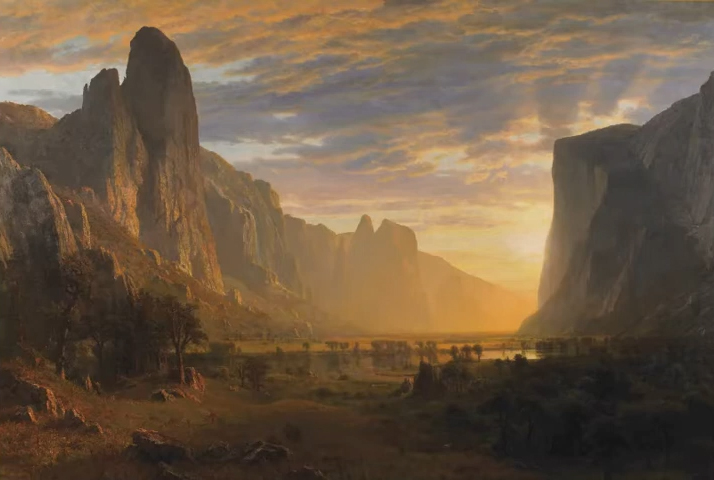
Albert Bierstadt’s “Looking Down the Yosemite Valley” captures the breathtaking grandeur of Yosemite National Park. Completed in 1865, this oil painting showcases Bierstadt’s romantic interpretation of American landscapes.
It measures 7 by 12 feet, emphasizing the vastness of the scene. The dramatic contrasts of light and shadow reveal Bierstadt’s mastery of luminism, inviting viewers to feel the serene beauty of nature.
The painting not only reflects the awe-inspiring majesty of the valley but also serves as a testament to the allure of the American wilderness during the 19th century.
2. The Wanderer above the Sea of Fog – Caspar David Friedrich

Caspar David Friedrich’s “The Wanderer above the Sea of Fog,” painted in 1818, is a quintessential romantic masterpiece.
The artwork features a solitary figure standing atop a rocky precipice, gazing into a sea of swirling fog that blankets distant mountains.
The dramatic landscape conveys introspection and the sublime power of nature. Friedrich’s use of vivid detail in the figure’s cape contrasts with the ethereal mist, creating a visual tension that captures the viewer’s imagination.
This iconic painting embodies the spirit of the Romantic era, celebrating human emotion and the majestic beauty of the natural world.
3. The Heart of the Andes – Frederic Edwin Church

Frederic Edwin Church’s “The Heart of the Andes,” created in 1859, measures an impressive 44 by 72 inches.
This captivating oil on canvas painting features a lush landscape, showcasing the Andes mountains in all their glory.
Church meticulously painted the vivid flora and fauna, reflecting the tropical climate and richness of the region.
The artwork’s dramatic lighting creates an atmosphere of serenity and wonder, inviting viewers to explore the intricacies of nature.
This masterpiece exemplifies the Hudson River School’s commitment to capturing the beauty and majesty of the American landscape intertwined with exotic locales.
4. South Wind, Clear Dawn (Red Fuji) – Katsushika Hokusai
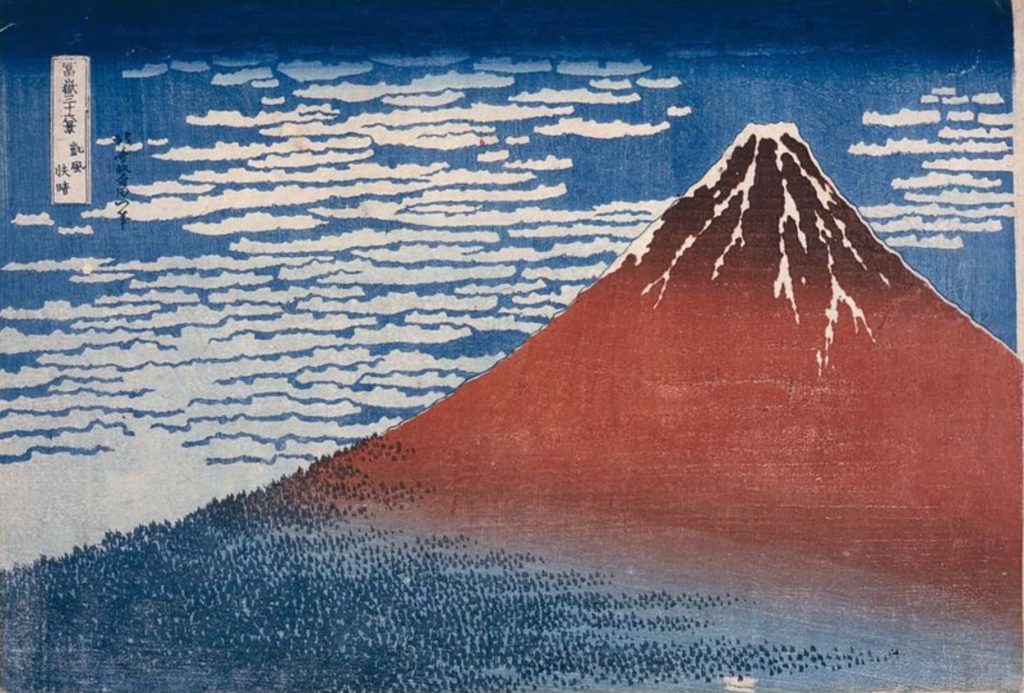
Katsushika Hokusai’s iconic woodblock print “South Wind, Clear Dawn,” commonly known as “Red Fuji,” features Mount Fuji basking in a deep red hue against a tranquil sky.
Created in 1830, this artwork belongs to Hokusai’s celebrated series “Thirty-six Views of Mount Fuji.” The vivid color beautifully contrasts with the soft blues, exemplifying Hokusai’s mastery of color and form.
This piece captures the essence of the changing seasons and the cultural significance of Mount Fuji, symbolizing resilience and tranquility in Japanese art.
5. Mont Sainte Victoire (Courtauld) – Paul Cézanne
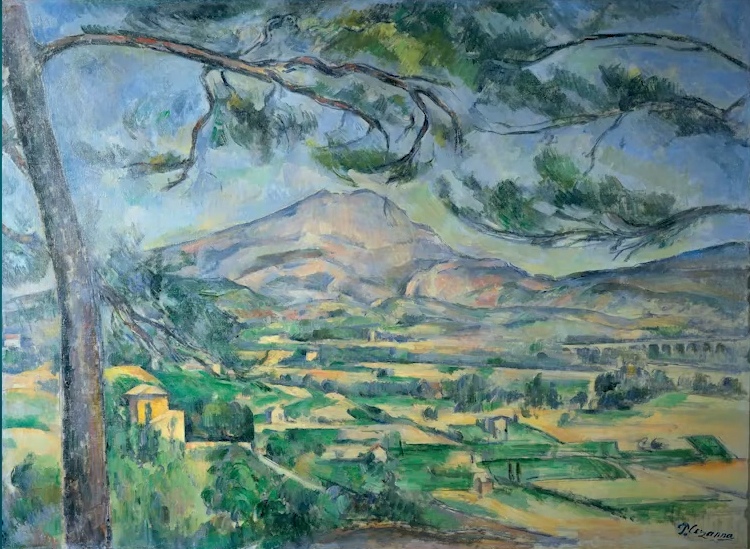
Cézanne’s “Mont Sainte Victoire” exemplifies his revolutionary approach to landscape painting. This iconic work, created between 1885 and 1887, showcases the mountain’s distinct shape through bold brushstrokes and vivid colors.
The painting measures 25 x 32 inches and illustrates Cézanne’s shift towards abstraction, as he simplifies forms and emphasizes geometric structure.
He captured the essence of Provence’s landscape, evoking both tranquility and strength, making it a significant contribution to post-impressionism.
This masterpiece profoundly influenced modern art, inspiring countless artists to explore new perspectives.
6. The Golden Hour – Thomas Moran

“The Golden Hour,” painted by Thomas Moran in 1904, captures the radiant beauty of the Grand Canyon at sunset.
This oil on canvas masterpiece measures 30 by 40 inches, showcasing colors that reflect natural light’s warmth.
Moran’s skillful blending of hues creates a breathtaking atmosphere, drawing viewers into the sublime landscape.
His ability to convey the effects of light and shadow illustrates the grandeur of the canyon, making it a significant contribution to American landscape painting.
This work exemplifies the romantic aesthetic, highlighting nature’s majesty with an emotional depth that resonates with audiences.
7. The Voyage of Life, Childhood – Thomas Cole
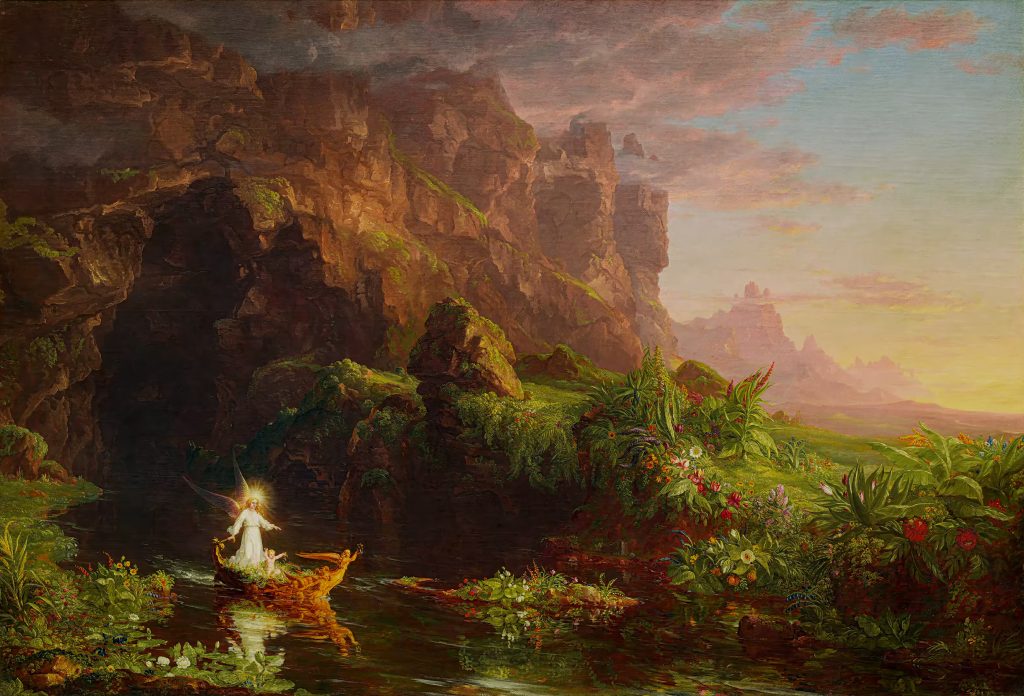
Thomas Cole’s “The Voyage of Life, Childhood,” painted in 1842, serves as a stunning visual narrative.
This oil painting, measuring 50 by 76 inches, portrays a serene landscape with a child in a boat, representing innocence and the dawn of life.
Mountains rise in the background, embodying both stability and aspiration. Cole’s use of light enhances the whimsical atmosphere, inviting viewers to reflect on life’s journey.
This masterpiece exemplifies the artist’s ability to merge nature with philosophical themes, solidifying his place in American art history.
8. The Rocky Mountains – Albert Bierstadt
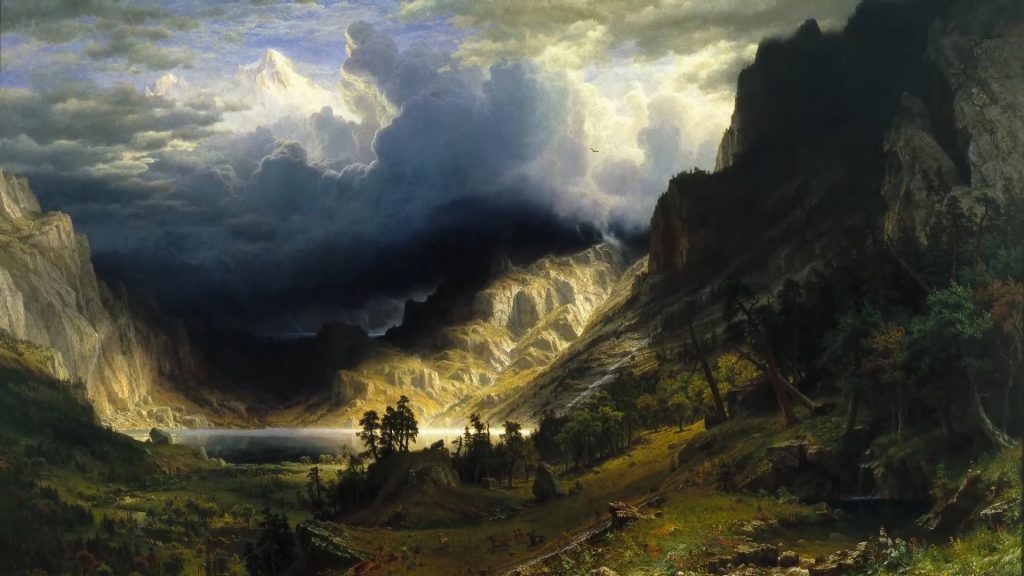
Albert Bierstadt’s “The Rocky Mountains” captures the breathtaking splendor of the American West. Painted in 1863, this monumental work measures 6 by 10 feet, showcasing towering peaks and expansive sky.
Bierstadt’s meticulous detail highlights the natural beauty and grandeur of the landscape. His use of light and color creates a dramatic atmosphere, immersing viewers in the scene.
This painting encapsulates the spirit of westward expansion and fascination with the American wilderness, making it a hallmark of 19th-century art.
9. Scene from ‘The Last of the Mohicans’: Cora Kneeling at the Feet of Tanemund – Thomas Cole
Thomas Cole’s “Cora Kneeling at the Feet of Tanemund,” painted in 1826, captures a pivotal moment from James Fenimore Cooper’s novel.
The artwork measures 23 by 34 inches and features dramatic mountain landscapes framing the emotional encounter. Cole’s masterful use of light highlights the figures while maintaining nature’s grandeur.
The serene yet intense atmosphere reflects themes of sacrifice and cultural tension, showcasing Cole’s ability to merge human emotion with stunning natural vistas, affirming his role in American Romanticism.
10. Pass at Glencoe Scotland – Thomas Moran

Moran’s “Pass at Glencoe Scotland,” painted in 1895, captures the dramatic beauty of the Scottish Highlands. Featuring a rugged landscape, the painting showcases steep mountains shrouded in mist.
Its captivating interplay of light and shadow brings depth to the scene, highlighting the tumultuous weather and lush valleys.
Measuring 18 by 24 inches, this work reflects Moran’s dedication to portraying nature’s majesty, vividly inviting viewers into the serene yet formidable highland environment.
The painting exemplifies the romantic spirit, emphasizing both the allure and power of Scotland’s natural landscapes.






